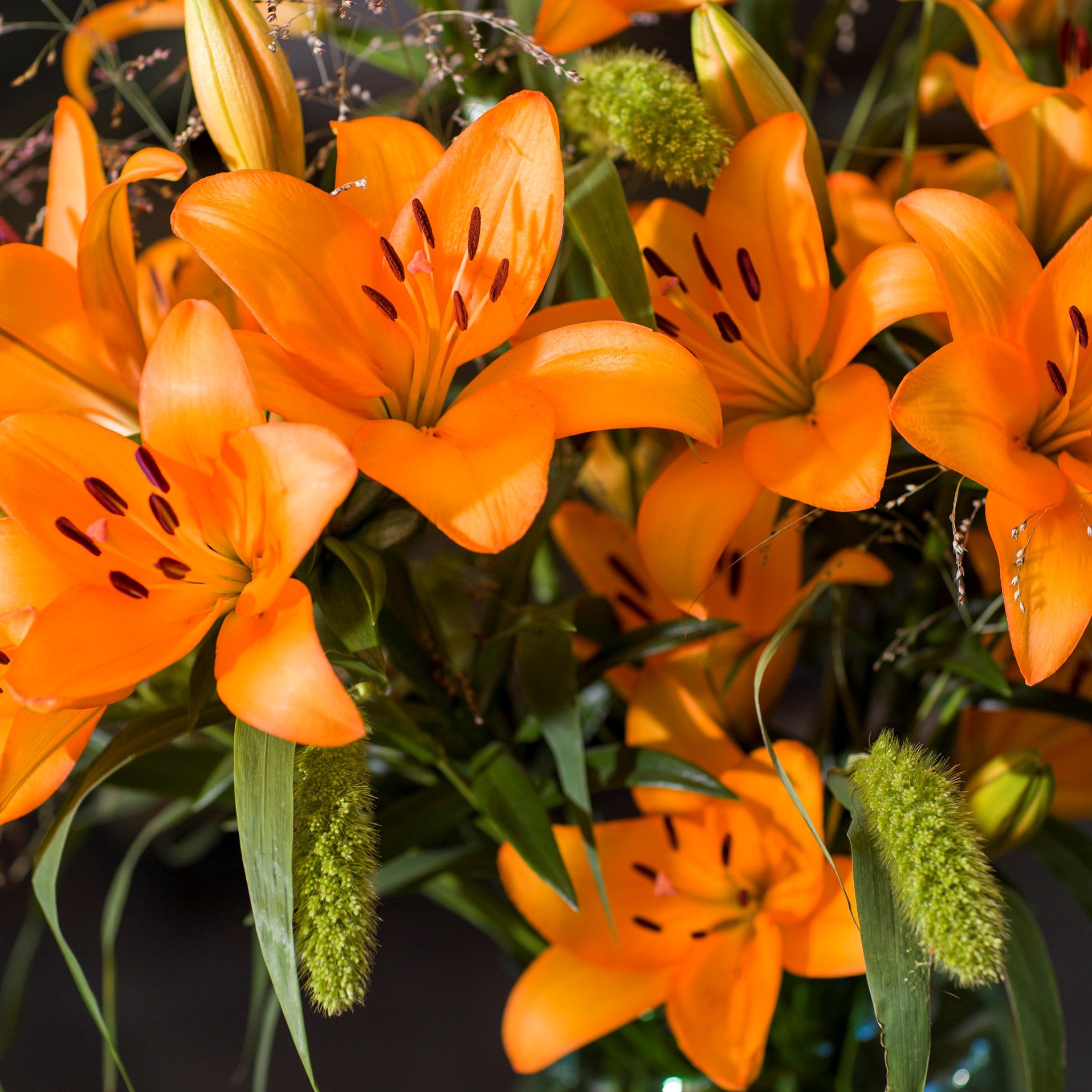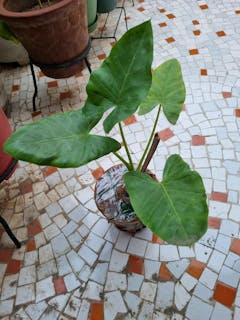1.Proper soil preparation is crucial for planting bulbs successfully. Well-draining, loose soil enriched with compost or leaf mold. Ensure excellent drainage; if your soil is clay-heavy, mix in some coco peat.
2.Ensure the bulbs receive 4 to 6 hours of sunlight daily, adjusting the light exposure according to the specific variety some prefer partial shade while others require full sun.
3.Plant bulbs at a depth two to three times their height (e.g., a 2 cm bulb goes 4–6 cm deep) with spacing depending on size, typically 5–15 cm apart.
4.Water lightly after planting, keep soil moist but not waterlogged during growth, and reduce watering after flowering to let foliage yellow and bulbs enter dormancy. 5.Apply a low-nitrogen, high-potassium fertilizer when shoots emerge and post-bloom.
6.Avoid cutting green leaves immediately after flowering to allow energy storage.
7.Prevent pests and diseases by avoiding overwatering and treating bulbs with neem oil or mild fungicide before planting.
8.Store bulbs off-season by cleaning, drying in shade, and keeping them in breathable containers at 10–20°C with moisture absorbers; avoid sealed plastic and humid conditions.
Asiatic Hybrid Lilies
Family
Liliaceae
Origin
Asia
Description
Lilium is a genus of herbaceous flowering plants growing from bulbs, all with large prominent flowers.
The flowers of Asiatic or Tiger lilies are large, have no or little fragrance, and come in a wide range of colors including whites, yellows, oranges, pinks, reds and purples & are usually found in a single colour, except for lollypop hybrid. Markings include spots and brush strokes.
Asiatic Lilies have long glossy leaves, which are skinny and usually 4 to 5 inches. They are bright green in colour, and when Asiatic Lilies grow, they get long stalks and develop multiple narrow leaves near the stem placed closely.
The plants are early bloomer or ealry spring flowering. Flowers are borne in racemes or umbels at the tip of the stem, with six tepals spreading or reflexed, to give flowers varying from funnel shape to a "Turk's cap". The tepals are free from each other, and bear a nectary at the base of each flower.
Asiatic hybrid Lilies bear 4-6 in wide blossoms (10-15 cm) on 2-5 ft. tall plants . They feature straight stems, high bud counts and generally brightly spotted blossoms and vary in shape from simple open bowls to flowers with exquisitely recurved petals. Vigorous, long-lived, Asiatic hybrid Lilies seldom need staking and enjoy a long blooming season (up to 1 month) but most of them are unscented
Lilium Asiatic ‘Caesar’s Palace’ bulbs produce vivid orange, unscented lilies that are ideal for sunny garden borders. They flower from December to March in plains and from April to June in hilly regions. Planting is best done between October and November.
Environment
Lily bulbs can be planted in spring, but getting them into the ground in autumn gives them a head start. Because they are stem rooters and the bulb often anchors a heavy blossom load, it’s critical to sink it at least 6 to 7 inches from top of bulb to top of soil.
Tiger Lilies love full sun, and six hours or more is imperative. Lilies like to have their "head in the sun, feet in the shade." To keep their roots cool, plant them with low-growing annuals, perennials, or grasses. Liliums don't like to be crowded , for healthy growth and good flower production, make sure the plants have enough room around them so sunlight can reach their stems and leaves.
Liliies requires a well drained soil loamy soil. Incorporate organic material into clay soils to increase drainage and nutrients.
Plant lilies in a raised bed to ensure proper drainage. Dig a generous planting hole 8” deep. Put some all-purpose fertilizer in the bottom of the hole and mix it around to disperse. Add a few handfuls of loose soil back into the hole and then position the bulbs so they’re 6 to 7 inches deep. Lilies look best when they are planted in clusters of 3 or more bulbs.
Plant lilies as soon as you get them because the bulbs lack the papery covering (known as a "tunic") that is common to other hardy bulbs, they can dry out quickly in storage.
Landscape Use
The Asiatic lilies make excellent landscaping additions for flower color in the garden. Their blooms work as great cut flowers making them perfect in flower arrangements






















